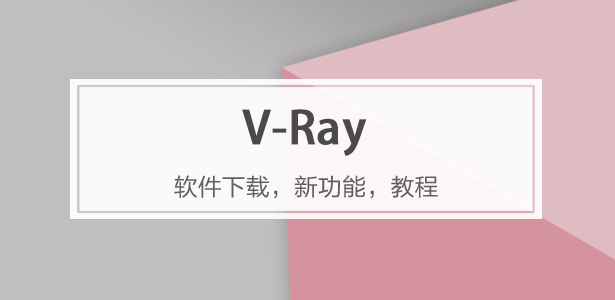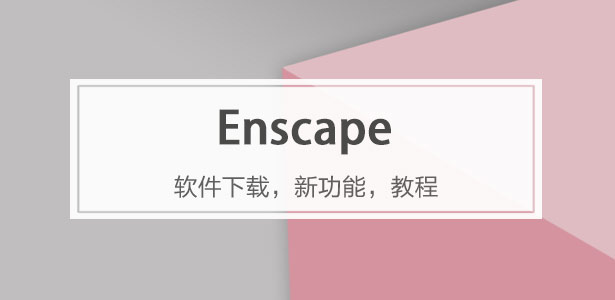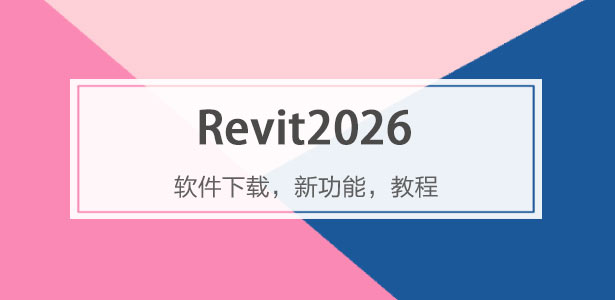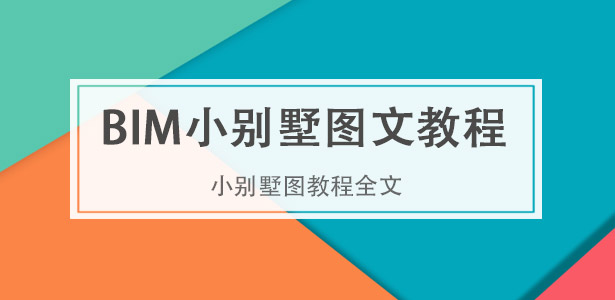
下載app免費(fèi)領(lǐng)取會(huì)員




建筑/室內(nèi)方案設(shè)計(jì)? 行之建筑設(shè)計(jì)事務(wù)所
EPC總包單位? 中國(guó)中元國(guó)際工程有限公司
項(xiàng)目地址? 江西省景德鎮(zhèn)
完成年份? 2024年
建筑面積? 5300平方米
撰文? 熊星
有趣的問(wèn)題
“一個(gè)綠地公園中的設(shè)備用房,可以做成什么樣?”
“What could a utility building in a green park look like?”
2019年夏天,蟬鳴怒響中,我被問(wèn)到了這個(gè)有趣的問(wèn)題。提問(wèn)的人是景德鎮(zhèn)陶溪川文創(chuàng)園區(qū)的業(yè)主,陶文旅的劉子力董事長(zhǎng)。2012年他邀請(qǐng)清華大學(xué)張杰教授團(tuán)隊(duì)主持陶溪川保護(hù)更新利用的規(guī)劃。
In the noisy summer of 2019 with cicadas chirping, I was asked this intriguing question. The inquisitor was Mr. Liu Zili, Chairman of Taowenlv, owner of the Jingdezhen Ceramic Art Ave Taoxichuan. Since 2012, he invited Professor Zhang Jie’s team from Tsinghua University to lead the preservation and renovation planning.
陶溪川的前身是國(guó)營(yíng)宇宙陶瓷廠和陶瓷機(jī)械廠,如今它已經(jīng)成為國(guó)家級(jí)文化產(chǎn)業(yè)示范園區(qū)、國(guó)家雙創(chuàng)示范基地、國(guó)家級(jí)夜間文化和旅游消費(fèi)集聚區(qū)、全國(guó)非遺旅游街區(qū),這里是很多“景漂”藝術(shù)家和創(chuàng)作者的舞臺(tái)。
Once the state-owned Cosmos Ceramics Factory and Ceramic Machinery Factory, Taoxichuan has since transformed into a national cultural industry and innovative entrepreneurship model zone, a nighttime tourist destination, and a street packed with intangible cultural heritage. It serves as a stage for many artists and creators who have migrated to Jingdezhen.



2019年的陶溪川,一期剛剛呈現(xiàn),其他區(qū)域還沒(méi)有成形,現(xiàn)有建筑也存在電力容量和高層水壓不足的情況。園區(qū)規(guī)模的擴(kuò)張需要基礎(chǔ)設(shè)施先行。最初,陶文旅希望盡可能減少分散設(shè)備外機(jī)對(duì)未來(lái)園區(qū)改造風(fēng)貌的影響。經(jīng)過(guò)一系列技術(shù)評(píng)估、節(jié)能優(yōu)化的論證,陶文旅決定建造一個(gè)集中式能源中心,為未來(lái)擴(kuò)增的園區(qū)提供冷熱源、消防加壓水和電力,并統(tǒng)籌園區(qū)的能源優(yōu)化與消防管理。
Back in 2019, the first phase of Taoxichuan had just been unveiled, but many areas were still under development. The existing infrastructure was strained, with insufficient electrical capacity and water pressure for the upper floors. Infrastructure had to catch up to the site’s growing ambition. Initially, the client wanted to minimize the visual impact of scattered utility units. After a series of technical evaluations and energy-saving optimizations, they decided to build a centralized energy center to provide heating, cooling, water pressure, and electricity for the expanded campus, while also managing energy efficiency and fire safety across the site.
能源中心選址在園區(qū)一處空地中。這整個(gè)空地將被下挖建造成連通周圍幾個(gè)酒店的地下停車庫(kù),這項(xiàng)工程正好與冷熱通網(wǎng)智慧管線的鋪設(shè)相結(jié)合,最后再覆土,恢復(fù)成一個(gè)綠地公園。
The energy center would be located on a vacant lot, which would be excavated to construct an underground parking lot connected to nearby hotels. This construction would be integrated with the laying of heating and cooling pipelines and smart network. Once complete, it would be re-covered with greenery, restored to a green park.
那么,一個(gè)綠地公園中的設(shè)備用房,可以做成什么樣?
Back to the question: what could a utility building in a green park look like?

一分為二
能源站俗稱設(shè)備用房,一般是不對(duì)公眾開(kāi)放的。它由消防水池、水泵間、鍋爐間、制冷機(jī)組、變電站和控制中心組成,封裝在一個(gè)大盒子里,最后在盒子頂上放置大型的冷卻塔,再被百葉圍一圈。訓(xùn)練有素的建筑師,能拿出很多“立面手法”,來(lái)“美化”這種方盒子的外觀。但有沒(méi)有辦法在滿足能源中心內(nèi)部功能需求的同時(shí),最大化保留公園的開(kāi)放空間?
An energy station, often referred to a utility building, is not a place where you will host a party. It usually consists of a fire water tank, pumps, boilers, refrigeration units, substation, and control center, all enclosed in a big box with massive cooling towers sitting on top,? surrounded by louver screens. A skillful architect could come up many ways to “dress up” such a box. But what intrigued me was whether there was a way to meet the functional needs of the energy center while maximizing the open space in the park.
我們將建筑體量一分為二:冷卻機(jī)組、配電、鍋爐間和消防水池埋在地下與綠地連接成草坡,就像將草地向上撕開(kāi)一角;而冷卻塔、控制中心懸浮于空中,建筑體量根據(jù)所需空間大小排列,成楔形。
We divided the building into two parts: the cooling units, power distribution, boiler room, and fire water tank are buried underground, blending into the landscape as a grassy slope like tearing up a corner of the lawn;? seven massive cooling towers and control center were suspended above, forming a wedge shape.




盡管建筑內(nèi)部不對(duì)公眾開(kāi)放,但通過(guò)兩個(gè)體塊的切分,建筑所占用的公園面積又還給了公眾,公園總面積不被減少。在炎炎夏日,這個(gè)巨大的“遮陽(yáng)棚”下是非常舒適的乘涼灰空間,也是草地上各種活動(dòng)的看臺(tái)。
Although the building interior is still closed for the public, by splitting the volume, it returns the space to the park, which would be otherwise occupied by the building footprint. On hot summer days, the large "canopy" created by the structure became a welcome, shaded space for relaxation—and a natural viewing platform for whatever fun was happening in the park.




能源中心北側(cè)臨街,建筑線條非常硬朗,真實(shí)的設(shè)備和管線在立面展露,像個(gè)巨大的機(jī)器;但它在公園一側(cè)則要柔軟輕薄許多,懸浮在空中的形體呈現(xiàn)兩個(gè)曲線的“眼睛”——分別是控制中心和會(huì)議室,它們都是利用桁架的內(nèi)部結(jié)構(gòu)空間產(chǎn)生的。
The north elevation along the street, has bold, strait industrial features, exposing the real equipment and pipes like a massive machine. On the park-facing side, however, the building looks softer, lighter and more organic, with two curved “eyes”—— the control center and a meeting room, both created using the internal space of the truss structure.





我們?cè)O(shè)想在這懸浮體的底部掛設(shè)一層風(fēng)動(dòng)鱗片,像風(fēng)鈴一樣,作為點(diǎn)睛之筆。曲面隨風(fēng)翻涌,化身為一個(gè)公共綠地中的裝置藝術(shù),就像飄浮在草坡上的機(jī)械云彩—— “云引擎”因此得名。
We envisioned hanging wind-driven scales under the suspended structure as a finishing touch. These scales would ripple in the breeze, turning the structure into an art installation—a mechanical cloud floating above the grass. That’s how it got the name "Cloud Engine."



環(huán)境共融
作為陶溪川建筑群像之一,“云引擎”和而不同,與周邊有緊密的關(guān)系。
As a member of the Taoxichuan architecture cluster, Cloud Engine is distinctive but getting well with its surroundings.
在“云引擎”設(shè)計(jì)方案初成時(shí),場(chǎng)地西側(cè)的景仰書院的設(shè)計(jì)也開(kāi)始啟動(dòng)了。我在一次會(huì)議上看到了董功老師靜謐的庭院效果圖,忽然一驚。因?yàn)槿绻谶@歲月靜好的庭院里看見(jiàn)這一座探出頭的金屬機(jī)械,那可就不妙了。
When the schematic design of Cloud Engine was delivered, the west neighbour project Jingyang Camphor Court by Vector Architects has just begun. Occasionally I saw their rendering of a nice peaceful courtyard in a design meeting, it suddenly hits my mind: If a hulking metal machine peeking out in this scene, they must freak out.
所以我們將整個(gè)建筑體型再向北邊平移,并調(diào)整了建筑體型切入角度,確保從景仰書院的庭院之中剛好看不到“云引擎”探出頭來(lái)。這個(gè)調(diào)整后的平面銳角也加強(qiáng)了建筑透視的張力效果。
In order to perfectly avoid the Cloud Engine being visible from that lovely courtyard, we shifted the entire building north and adjusted the plan’s angle preciously. This tweak also sharpened the building’s form, enhancing the dramatic perspective.


從現(xiàn)場(chǎng)南側(cè)國(guó)貿(mào)酒店的大堂入口,我們也協(xié)同景觀起坡做了相似視覺(jué)控制,將“云引擎”的戲劇張力約束這青青草地的范圍之內(nèi),消隱在周邊建筑其各自小宇宙之外。
At the lobby of the Guomao Hotel on the south site, we use the landscape terrain as a barrier to control the view. It helps keeping the Cloud Engine’s dramatic presence within the grassy area, and not aggressive or even hidden from surrounding buildings’ perspective.


技術(shù)與美學(xué)
能源中心先有設(shè)備,再有建筑。經(jīng)過(guò)測(cè)算,供冷設(shè)備為3座2200RT和1座1100RT變頻離心式制冷機(jī)組,搭配7臺(tái)大型冷卻塔;供熱為三臺(tái)5.6MW燃?xì)鉄崴仩t;生活熱水則為兩臺(tái)1.4MW燃?xì)鉄崴仩t,等等。技術(shù)參數(shù)作為構(gòu)建空間設(shè)計(jì)的基本常量。
An energy center starts with the equipment, and then comes the building. The cooling system includes three 2200RT and one 1100RT variable-frequency centrifugal chillers, paired with seven large cooling towers. For heating, there are three 5.6MW gas hot water boilers, plus two 1.4MW gas boilers for daily-use hot water. These technical specs became the foundation for the design.

為了搭載這些設(shè)備,我們量身定制柱跨模數(shù),避讓穿插管線,確保空間滿足工藝之需。這對(duì)建筑—結(jié)構(gòu)—設(shè)備三者的協(xié)同統(tǒng)一提出了很高的要求,是在與中元團(tuán)隊(duì)緊密協(xié)作和技術(shù)支持之下才得以實(shí)現(xiàn)的。我們建立了參數(shù)模型,以便實(shí)時(shí)反應(yīng)建筑—結(jié)構(gòu)—設(shè)備的調(diào)整對(duì)整體效果的影響。除了數(shù)字模擬,甚至進(jìn)行了實(shí)測(cè)風(fēng)洞實(shí)驗(yàn)。
We tailored the building’s grid to accommodate the equipment and carefully routed the pipes, ensuring the space met all operational needs. This required precise coordination between the architectural, structural, and mechanical systems, all made possible through our collaboration with China IPPR team. We built parametric models to simulate how adjustments would affect the overall design, and even conducted wind tunnel tests.





設(shè)備的技術(shù)邏輯本身就是一種美,但在傳統(tǒng)的建筑學(xué)范疇之中,設(shè)備之美要么被視而不見(jiàn),藏匿于“管井”“天花”和“百葉”的背后,要么只是作為一種所謂“工業(yè)風(fēng)”形式風(fēng)格被室內(nèi)裝修行業(yè)爭(zhēng)相模仿。
The equipment’s technical logic has a beauty of its own, but in traditional architectural practice, this beauty is either hidden in shafts, ceilings and louvers, or, simply imitated by the interior designers, referring to “industrial style.”
在“云引擎”的設(shè)計(jì)中,我們希望將設(shè)備之美率真地展現(xiàn)出來(lái),與建筑融為一體,呈現(xiàn)整體的機(jī)械感。在立面的細(xì)節(jié)里,我們用中英文真實(shí)標(biāo)注了其功能:例如在冷水管上標(biāo)注“冷”,在檢修通道刻寫“修”,建筑細(xì)部如同設(shè)備操作說(shuō)明書。
In this project, we aimed to showcase the beauty of the equipment, integrating it with the architecture to present a cohesive mechanical aesthetic. In the facade details, we used both Chinese and English labels to mark the functions: for instance, "Cold" is carved on the cold water pipes, and "Repair" is engraved on the maintenance access — so that the building’s detailing reads like an operational manual.





一步之遙的遺憾
“云引擎”從2019年開(kāi)始設(shè)計(jì)到2023年投入使用,完整經(jīng)歷了疫情起起伏伏所帶來(lái)的阻隔。尤其在最后外墻施工的關(guān)鍵時(shí)期,遠(yuǎn)程協(xié)同詞不達(dá)意,困難重重。盡管在陶文旅和中元團(tuán)隊(duì)的盡責(zé)努力之下,大部分效果得以實(shí)現(xiàn),底部的風(fēng)動(dòng)鱗片卻因?yàn)楦鞣N原因沒(méi)能掛上。
Since 2019, the project went through many ups and downs due to the COVID-19 pandemic. Especially during the crucial stage of exterior construction, remote collaboration was significant challenging. Despite the responsible efforts of the client and EPC team, and most of the design intention were achieved, eventually the wind-driven scales at the bottom were not installed for various reasons.


后來(lái)我不止一次自己爬上龍骨,測(cè)試懸掛鱗片的打樣和光照效果。為了對(duì)底部龍骨的誤差進(jìn)行摸底,我們也進(jìn)行了3D掃描實(shí)測(cè)。這組實(shí)測(cè)數(shù)據(jù)將作為鱗片生產(chǎn)和安裝的重要基礎(chǔ),為未來(lái)的可能性做好準(zhǔn)備。
I personally climbed the frame several times to test prototypes of the scales and their lighting effects. To better document the tolerances of the bottom keels, we conducted a 3D scan, and the data collected will serve as a critical foundation for potential installation? in the future..
可惜的是,至今這個(gè)飄浮在草坡上的機(jī)械云彩未能點(diǎn)睛,與裝置藝術(shù)的設(shè)想仍有一步之遙。但我仍然滿懷希望,也許未來(lái)通過(guò)活動(dòng)運(yùn)營(yíng)的契機(jī),底部的鱗片可以安裝,這片“云彩”能借風(fēng)而起。
Unfortunately, the “mechanical cloud” floating above the grass slope remains unfinished, this building is one step away from an installation art piece. But I remain hopeful—perhaps one day, by any event opportunities, the scales might be installed, and this cloud will finally catch the wind.



非凡的未來(lái)日常
想起更遙遠(yuǎn)的2010年,我參與到BIG哥本哈根垃圾焚燒廠項(xiàng)目競(jìng)賽之中,那是一座能在在頂上滑雪的垃圾焚燒廠。
It reminds in distant past of 2010, I was working in BIG and participated in a competition for a waste-to-energy plant in Copenhagen, which people could ski on the roof.
那真是一個(gè)奇異的想法。贏得競(jìng)賽之后,大家喝得微迷,我記得有人說(shuō):“雖然現(xiàn)在覺(jué)得不可思議,等很多年以后,我們的孩子會(huì)覺(jué)得在垃圾焚燒廠上滑雪是再正常不過(guò)的事情。”
It was a bold and unusual idea. After winning the competition, during the celebratory drinks, someone said, “It may seem incredible now, but in a few years, our kids will think skiing on a waste-to-energy plant is the most normal thing.”
在我離開(kāi)丹麥之后,那個(gè)項(xiàng)目經(jīng)過(guò)后來(lái)8年的努力才得以落成,但是那個(gè)幽默的二氧化碳煙圈兒的想法最終也沒(méi)能實(shí)現(xiàn)。遺憾有時(shí)候是創(chuàng)新的宿命,這也是設(shè)計(jì)最艱難與迷人之處:對(duì)現(xiàn)有的慣性拷問(wèn),將今天的非凡變成未來(lái)的日常。我至今以此自勉。
After I left Denmark, the project took another eight years to made real, but the most playful idea of? “CO2 smoke rings” was never realized. Sometimes, unfulfilled potential is the price of innovation. That’s what makes design so challenging and fascinating: rethink the current, turning today’s extraordinary into tomorrow’s daily life. It keeps me motivated ever since.





設(shè)計(jì)圖紙 ▽



完整項(xiàng)目信息
項(xiàng)目地址:江西省景德鎮(zhèn)市新廠西路150號(hào)陶溪川文創(chuàng)街區(qū)
完成年份:2024
建筑面積:5300平方米
建筑/室內(nèi)方案設(shè)計(jì):行之建筑設(shè)計(jì)事務(wù)所
聯(lián)絡(luò)郵箱:info@xing.design
EPC 總包單位:中國(guó)中元國(guó)際工程有限公司
業(yè)主方:景德鎮(zhèn)陶邑文化發(fā)展有限公司
施工方:中國(guó)中元國(guó)際工程有限公司(建筑)、蘇州金螳螂建筑裝飾股份有限公司(室內(nèi))
XINGDESIGN行之建筑設(shè)計(jì)團(tuán)隊(duì):
主持建筑師:熊星
項(xiàng)目成員:任美子、林偉喬、雷昇、陳墨、伍導(dǎo)、李紹禹、施宇航、李雪姿、張欣語(yǔ)
中國(guó)中元國(guó)際工程有限公司設(shè)計(jì)團(tuán)隊(duì):
項(xiàng)目總師:別舒
EPC項(xiàng)目經(jīng)理:王輝
建筑:劉波鋒、李環(huán)宇
結(jié)構(gòu):張建勛、劉智敏、徐達(dá)
暖通:杜可心
熱力:賈澤
給排水:張威
電氣:沈雯
自控:丁艷虹
攝影:是然建筑攝影、李逸
版權(quán)聲明:本文由行之建筑設(shè)計(jì)事務(wù)所授權(quán)發(fā)布。歡迎轉(zhuǎn)發(fā),禁止以有方編輯版本轉(zhuǎn)載。
投稿郵箱:media@archiposition.com
本文版權(quán)歸腿腿教學(xué)網(wǎng)及原創(chuàng)作者所有,未經(jīng)授權(quán),謝絕轉(zhuǎn)載。

上一篇:BIM建筑|虛張聲勢(shì)之家 - 廢土樂(lè)園 / 察社辦公室
下一篇:BIM建筑|ISA意廈二等獎(jiǎng)方案:杭州臨平數(shù)智城 - 春蠶計(jì)劃,田園都市












推薦專題
- 光,才是這個(gè)家的真正設(shè)計(jì)師
- 讓自然融入三層空間的詩(shī)意居所,光影、綠意、木質(zhì)感,家的質(zhì)感拉滿了
- JKMM贏得芬蘭新建筑與設(shè)計(jì)博物館競(jìng)賽,預(yù)計(jì)2030年建成
- 展銷共存、多場(chǎng)景融合的上海虹橋進(jìn)口商品展示交易中心
- 走進(jìn)那個(gè)讓全村人相遇的786㎡大屋頂:西烏素圖村民中心漫游記
- 月山建筑新作:紫房子庭院式酒店|項(xiàng)目推介
- 建筑師中的建筑師:走近阿爾瓦羅·西扎
- 寺院之城:布哈拉|河中漫記·烏茲別克斯坦
- 中建西南院+WATG作品:九寨溝日賽谷麗思卡爾頓隱世酒店
- 從被忽略到“自然寵兒”——哥斯達(dá)黎加峽谷木屋,用石墻藏隱私,用全景窗裝下整片...



































